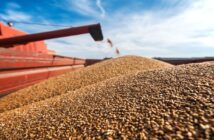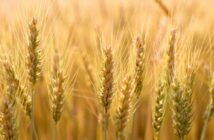The AHDB published the latest UK cereal supply and demand estimates for the 2022/23 season this week. The main revisions include a further reduction in total cereal demand for animal feed, as well as increased exports for wheat and oats following a rally in exports as of late.
Total availability of wheat is estimated slightly lower on reduced imports, yet a reduction in domestic consumption has increased the wheat balance further in the latest estimates. Olivia Bonser, analyst Cereals and Oilseed AHDB says: “If realised, the wheat balance will be the largest since 2019/20. Due to this heavy wheat balance, it’s perhaps not surprising that wheat exports this season are looking stronger. Wheat exports for the 2022/23 season have been revised up 350K tonnes from January’s estimate and up 989K tonnes on the year to 1.5M tonnes.
Wheat exports
“From July 2022 to January 2023, the UK exported 736K tonnes of wheat, with January alone accounting for 159K tonnes. Therefore, to reach the 1.5M tonnes estimate, the UK would need to export a minimum of 153K tonnes of wheat a month for the remaining five months of the season. According to European Commission data, 1.130M tonnes of UK common wheat has been imported by the EU up to 27 March. Anecdotal reports also suggest that the export pace was strong in February and March, with firm commitments for April too. It’s important to point out that price competitiveness and continued buying will be crucial for export direction over the rest of the season, as cheaper Black Sea supplies continue to weigh on the market.”
Despite the increase in exports, closing stocks of wheat are still expected to be high at 2.475M tonnes, up 34% on the year and if realised these would be the largest closing stocks since 2015/16.
Oats
Moving on to oats, the balance of oat supply and demand is up 29K tonnes from January’s estimate largely due to cuts in animal feed usage, and now sits at 273K tonnes. However, the export forecast has also increased from the last estimates, now at 155K tonnes, based on a strong export pace so far this season. If realised, this would be the largest amount of UK oat exports since 2002/03. In the season to date (Jul-Jan), the UK exported 117.6K tonnes of oats, more than four times what had been exported at the same point last season. Again, latest data from the European Commission suggests that the EU has imported 137.7K tonnes of oats from the UK up to end-March.
Total cereals demand in 2022/23 for animal feed has been revised down 240Kt from January’s estimate, now at 12.549M tonnes. This is 579K tonnes lower on the year and remains the lowest level since 2016/17.
Animal feed
“Throughout the season, animal feed production has declined at a greater rate than first anticipated, as challenges from high input costs in the livestock sector squeeze margins,” adds Ms Bonser. “Since January’s estimates, cattle feed demand is expected to be lower, with tightening dairy margins and producers expected to be relying more on forage and grazing. Having said this, some regions experienced poor forage quality this season, giving a slight boost to feed requirements over the winter. In AHDB’s winter agri-market outlook, pig meat production was also forecast to decline, indicating continued losses in feed demand from the sector too. Significant declines in poultry feed production are also expected to continue. The weather will remain a key watchpoint for ruminant feed demand over the rest of the season. According to GrassCheckGB, grass growth is still slightly behind average, though forecasts suggest growth is on an upwards trend, something to monitor moving forward.
“For wheat specifically, the estimate for demand in animal feed has been revised down by 3% from January’s estimate and now sits at 6.95M tonnes. The decrease is largely due to an overall decline in animal feed production across all sectors, though anecdotal reports suggest wheat will be prominent in rations for the remainder of the season, due to high availability and price relativity.”
Usage of barley in animal feed is also down from January’s estimate (by 12K tonnes) at 4.06M tonnes. Again, the drop in usage is in line with a reduced outlook for animal feed demand overall. :




